Volume 7, Issue 2
Displaying 1-15 of 15 articles from this issue
- |<
- <
- 1
- >
- >|
-
2022Volume 7Issue 2 Pages 155-171
Published: April 30, 2022
Released on J-STAGE: June 05, 2022
Download PDF (2928K)
-
2022Volume 7Issue 2 Pages 173
Published: April 30, 2022
Released on J-STAGE: June 05, 2022
Download PDF (150K) -
2022Volume 7Issue 2 Pages 175-181
Published: April 30, 2022
Released on J-STAGE: June 05, 2022
Download PDF (838K) -
2022Volume 7Issue 2 Pages 183-187
Published: April 30, 2022
Released on J-STAGE: June 05, 2022
Download PDF (1570K) -
2022Volume 7Issue 2 Pages 189-194
Published: April 30, 2022
Released on J-STAGE: June 05, 2022
Download PDF (1433K) -
2022Volume 7Issue 2 Pages 195-200
Published: April 30, 2022
Released on J-STAGE: June 05, 2022
Download PDF (887K) -
2022Volume 7Issue 2 Pages 201-207
Published: April 30, 2022
Released on J-STAGE: June 05, 2022
Download PDF (1016K) -
2022Volume 7Issue 2 Pages 209-213
Published: April 30, 2022
Released on J-STAGE: June 05, 2022
Download PDF (721K) -
2022Volume 7Issue 2 Pages 215-218
Published: April 30, 2022
Released on J-STAGE: June 05, 2022
Download PDF (1418K)
-
2022Volume 7Issue 2 Pages 219-226
Published: April 30, 2022
Released on J-STAGE: June 05, 2022
Download PDF (1207K) -
2022Volume 7Issue 2 Pages 227-234
Published: April 30, 2022
Released on J-STAGE: June 05, 2022
Download PDF (1200K)
Original article
-
2022Volume 7Issue 2 Pages 235-242
Published: April 30, 2022
Released on J-STAGE: June 05, 2022
Download PDF (757K)
-
2022Volume 7Issue 2 Pages 243-248
Published: April 30, 2022
Released on J-STAGE: June 05, 2022
Download PDF (937K)
-
2022Volume 7Issue 2 Pages 249-256
Published: April 30, 2022
Released on J-STAGE: June 05, 2022
Download PDF (1470K) -
2022Volume 7Issue 2 Pages 257-265
Published: April 30, 2022
Released on J-STAGE: June 05, 2022
Download PDF (1648K)
- |<
- <
- 1
- >
- >|
